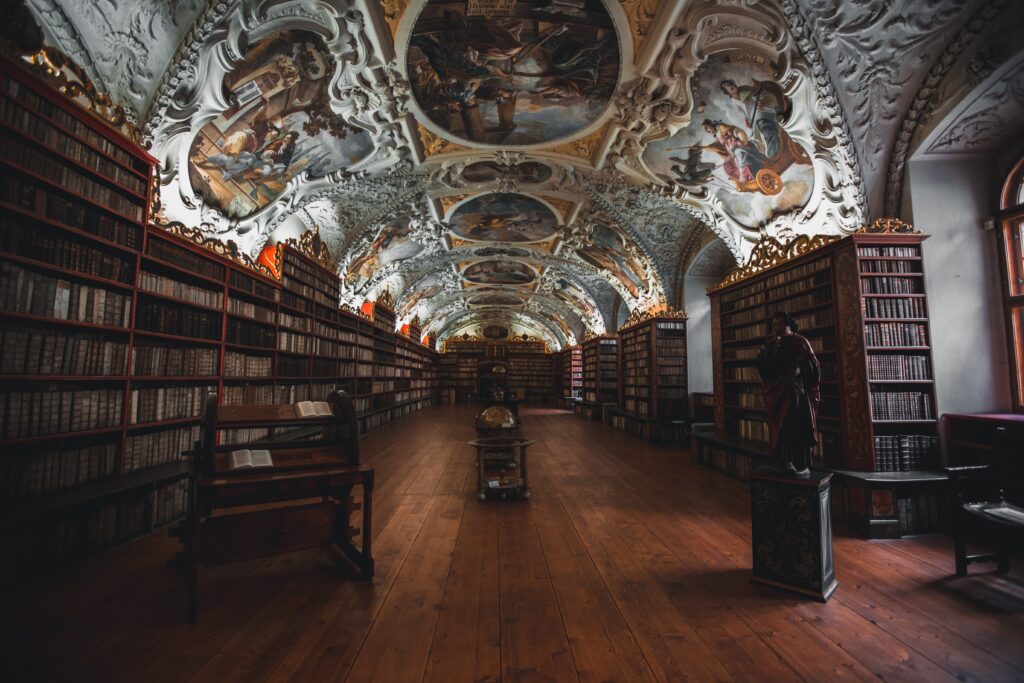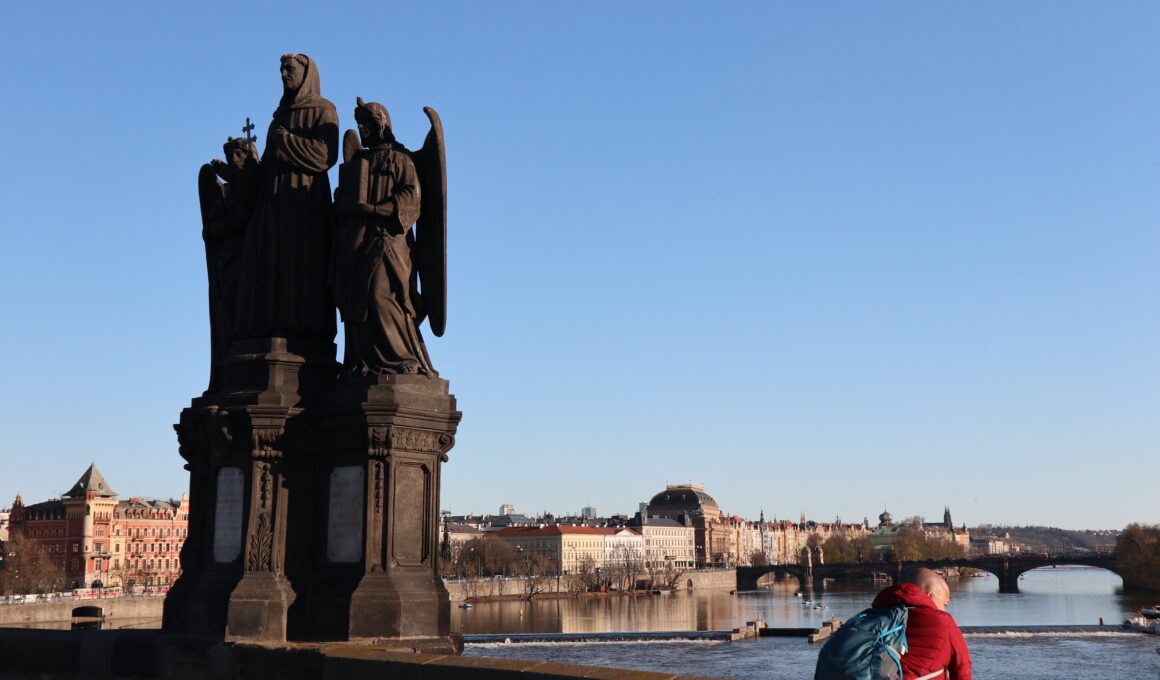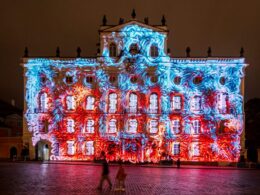Table of contents Show
Prague’s architecture and rich history are certainly a feast for the eyes and a cultural haven. Every corner of the city is a reflection of its legendary past, from the towering Prague Castle to the surprising Cubist architecture and the awe-inspiring Astronomical Clock. So, get your digital passports ready, because you’re about to go on an adventure like no other, discovering the marvels of Prague’s architecture!
The marvels of Prague, Czech republic’s architecture are a never-ending well of ideas; they are a reflection of the city’s cultural vitality and historical wealth, and they display an exquisite fusion of architectural styles. Travelers from all over the world are enchanted by the city’s architecture, which ranges from religious landmarks and mediaeval castles to modern daredevils and Cubist treasures.
Prague is an architectural paradise, so be sure to take your time exploring the city and letting the tales emerge as you go.
Exploring Czech Republic Architecture and its Storied History

The Czech republic architecture, which includes both modern structures and more ancient fortresses, is a reflection of its rich cultural history. Let’s explore the amazing and varied architectural environment that is the Czech Republic:
Prague Castle:The Crown Jewel
Prague Castle, a representation of Czech nationalism, must be included in any tour of Czech architecture. Sitting on a hilltop with a view of the Vltava River, this massive edifice incorporates Baroque, Romanesque, and Gothic styles. The highlight of the castle, St. Vitus Cathedral, has elaborate Gothic elements that reveal decades of artistry.
Český Krumlov:A Fairy Tale from the Middle Ages
Travel through time to the Middle Ages at the town’s castle, which features a one-of-a-kind Baroque theater and Renaissance architecture. This architectural wonder is further enchanted by the winding Vltava River.
Hluboká Castle: Czech Architectural Grandeur
Hluboká castle has changed greatly since its founding as a royal castle in the 13th century. Each era’s architecture has shaped the castle we see today. The main structure is Gothic, but the 19th-century Romantic reconstruction, influenced by Windsor Castle, gave Hluboká its charming appearance.
Telč – Harmony of the Renaissance
The architectural harmony created by the colorful facades and arcades has elevated Telč to the ranks of the Czech Republic’s architectural gems.
Olomouc: The Baroque Beauty
Olomouc is known for its Baroque architecture. Among the many examples of the city’s flamboyant Baroque architecture, the UNESCO-listed Holy Trinity Column stands out. Stories of religious fervor and creative genius are told via the delicate details.
The Brno Functionalist Buildings
The functionalist style is prominent in Brno, the second-largest city in the Czech Republic. Architect Ludwig Mies van der Rohe’s modernist Tugendhat Villa is a World Heritage Site according to UNESCO. Its modernist design and efficient use of space are examples of how Czech architecture progressed during the twentieth century.
Holašovice: Folk Baroque of South Bohemia
Among the South Bohemian Folk Baroque examples, the UNESCO-listed village of Holašovice stands noteworthy. A look into the rural architectural traditions that have molded the Czech countryside may be seen in the picturesque houses decorated with vibrant frescoes.
Modern Prague: A Contemporary Persona
There is a spot for contemporary buildings in the middle of Prague. Frank Gehry and Vlado Milunić collaborated on the unique Dancing House, which reflects the city’s dynamic character by challenging traditional forms.
Prague’s Architectural Tapestry: From Baroque to Art Nouveau
The legacy of Prague’s architecture is breathtaking and is well-known. A sanctuary for art and design lovers, the city is steeped in history and features a varied spectrum of architectural styles. Let’s go on a tour of Prague’s architectural mosaic, including everything from ornate Baroque structures to quirky Art Nouveau wonders.
Elegant Baroque Style
The Baroque architecture era, which was characterized by wealth and theatricality, is reflected in Prague’s skyline. The Baroque masterpiece that is the Church of St. Nicholas in Malá Strana is characterized by its ornate sculptures and frescoes that adorn its façade. Palaces such as Wallenstein Palace highlight the period’s distinctive Rococo flourishes and elaborate features as you meander along the winding alleys.
Glorious Neoclassicism
Prague deftly adopted the Neoclassical style as it progressed through time, drawing influence from the classical architecture of Rome and Greece. The Neoclassical structures that surround Wenceslas Square give off an air of harmony and equilibrium. A prime example of the city’s Neoclassical elegance is the National Museum, which stands tall and proud among its magnificent columns.
Whimsical Art Nouveau
With the turn of the century, Art Nouveau architecture in Prague breathed new life into city’s crumbling buildings. The Municipal House is a stunning example of Art Nouveau architecture that features organic shapes, floral patterns, and stained glass. As if to capture the essence of a new age, the cityscape started to sparkle with a refined newness.
Expressions in Cubism
Prague adopted Cubism in the early 1900s, daringly breaking with tradition. One of Old Town’s most recognizable Cubist structures, the House of the Black Madonna, uses its sharp angles and geometric forms to subvert conventional understanding. In this ancient metropolis, cubism acquired its own distinctive voice.
Visions of the Modern Era
The city of Prague became a playground for modernists after World War II. An example of functionalist design, the Baba Housing Estate prioritizes practicality and minimalism. As it recovered from the destruction caused by the war, the city adopted modern ideas of form and function.
Modern Melodies
Modern buildings in Prague blend with their older counterparts, continuing the city’s architectural legacy. The Dancing House, a work of art by Frank Gehry and Vlado Milunić, represents the vibrant energy of the city, where old and new come together in a captivating waltz.
Gothic Grandeur: Iconic Gothic Architecture in Prague
Visitors are whisked away to another time by the Gothic architecture of Prague, with its ornate spires, lofty vaults, and stories resonating through the stone walls. Embark with us as we explore this magical city’s winding alleys and uncover the stories of Gothic grandeur that are woven into its very fabric.
A Crown Jewel: St. Vitus Cathedral
At the very center of Prague Castle, atop the majestic St. Vitus Cathedral, is where our journey will commence. Constructed over the course of several centuries, this cathedral is a magnificent example of Gothic architecture at its finest. This cathedral is a picture of Gothic splendor in Prague, with its pointed arches, intricate flying buttresses, and spire forest.
Church of Our Lady before Týn: Old Town’s Guardian
As we approach Old Town Square, the Church of Our Lady before Týn catches our eye with its two Gothic spires that dominate the skyline. It is the guardian of Old Town. The pointed towers and majestic presence of the church, which dates back to the 14th century, have seen many centuries of Prague’s history. Guests are invited into a realm of gothic magnificence by the elaborate sculptures that cover the façade.
The Charles Bridge Tower: Keeper of the Bridge
The distinctive Gothic towers at the entrance of the Charles Bridge act as both gatekeepers and storytellers as you wander across it. Bedecked with sculptures and heraldic emblems, the Old Town Bridge Tower and the Lesser Town Bridge Tower provide breathtaking views of the Vltava River and Prague Castle, evoking an ethereal atmosphere reminiscent of the Middle Ages.
Bethlehem Chapel: A Little-Known Treasure
Among the city’s many hidden treasures, the Gothic Bethlehem Chapel is worth a visit. This little church, which dates back to the 14th century, served as the hub of the Hussite movement. It stands as a singular monument to Prague’s religious past, with its understated yet exquisite Gothic style reflecting a dedication to preaching and community.
The Powder Tower: A Portal into the Past
This Gothic masterpiece was once a component of Prague’s mediaeval defenses and now stands as a prominent landmark in the city. This massive gateway, which stands at the start of the Royal Route, takes people back in time to a time when fortifications were more than just a safety net.
Nurturing Architectural Excellence: The Academy of Art, Architecture and Design in Prague
The Academy of Art, Architecture, and Design (UMPRUM) in Prague is well-known as a top school for students interested in architecture and design.Let’s explore what makes UMPRUM special: its long history, fresh perspective, and unique methods:
A Creative Endowment
The UMPRUM has been a staple of Prague’s cultural scene since its founding in 1885. Some of the most prominent names in art, architecture, and design can trace their creative careers back to this institution. A lynchpin of Prague’s thriving creative scene, the academy has made innovation its mission.
Academic Training in Architecture at Its Best
If you have a deep-seated desire to shape spaces and create extraordinary surroundings, the architecture program at UMPRUM is the place to be. Students are encouraged to investigate the convergence of architecture, art, and design through the academy’s methodology, which extends beyond traditional boundaries. Graduates have a distinct set of skills and a deep comprehension of how architecture shapes communities through this comprehensive approach.
A Culture of Collaboration and Interdisciplinary Study
Collaboration and multidisciplinary exploration are key elements of UMPRUM. In this vibrant setting, students of architecture interact with professionals from a wide range of disciplines, including artists, designers, and architects. A culture of innovation is nurtured and students are encouraged to look beyond the conventional bounds of their discipline through this cross-pollination of ideas.
Proximity to Places That Spark Originality
The physical space at UMPRUM exemplifies the institution’s dedication to fostering innovation. Students are equipped with the necessary resources to realize their architectural dreams in our state-of-the-art studios, workshops, and collaboration spaces. Even the setting of the academy in Prague is illuminating; the city’s rich architectural history provides a beautiful backdrop against which the students pursue their education.
Igniting Personal Expression
UMPRUM is proud of its commitment to fostering each student’s uniqueness. Students in the architecture department are encouraged to develop a feeling of self-expression by investigating their own distinct design language. Graduates will not only possess exceptional skill but will also bring unique viewpoints to the ever-changing field of architecture, thanks to this program’s focus on personal creativity.





